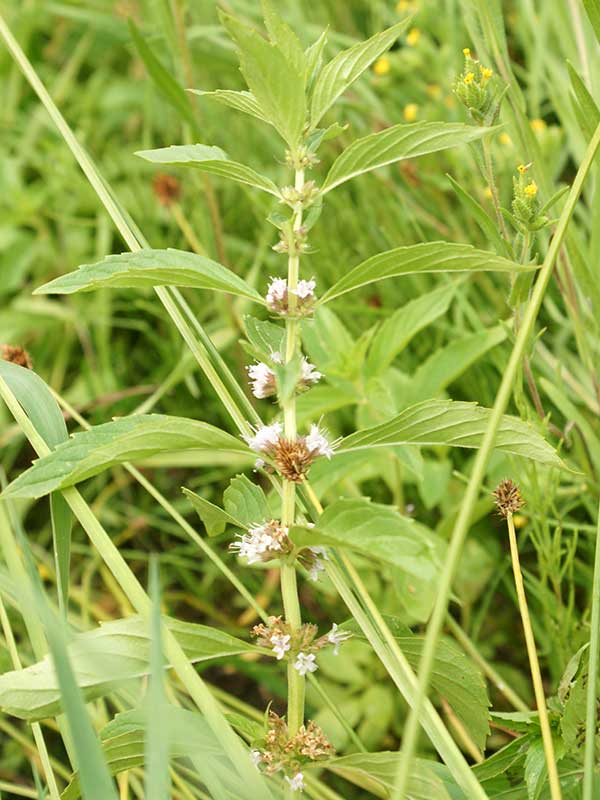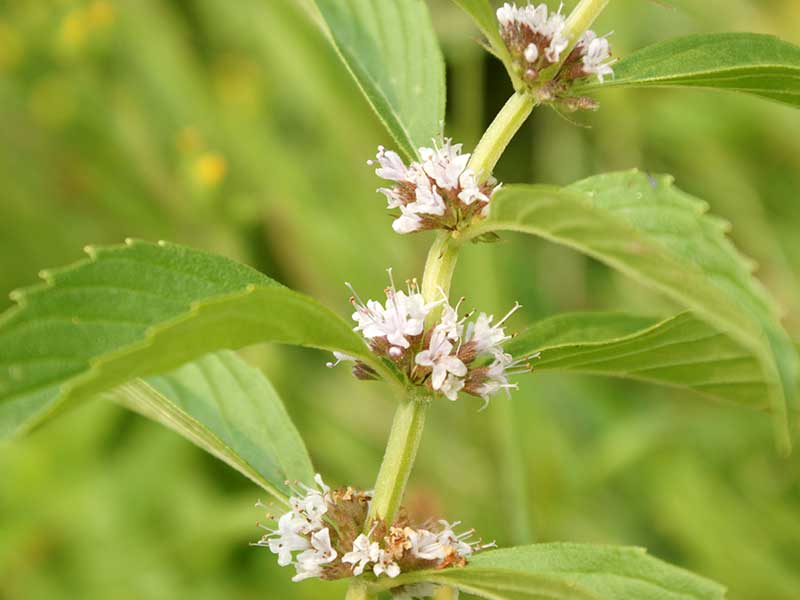Mentha canadensis / American cornmint
- crushed leaves smell like peppermint
- clusters of teeny white-blue-pink flowers in the axils of stem leaves
- square stems, lance-shaped leaves
- shaded, moist areas
- may form large clones
Also known as: Canada mint, American wild mint, Japanese cornmint, garden mint
American cornmint is a perennial plant with an underground creeping rhizome and upright shoots. It can grow to a height of about 18 inches (460 mm) and spread out over what sometimes seems like a vast area (of your garden).
The cornmint inflorescence is a raceme or spike. Teeny white, bluish or pink flower are arranged spirally around the stalk in the leaf axils, with up to 20 flowers in a cluster. Each flower has four petals. The flowers open from the bottom upward. The flowers appear in July and late summer.
The fruits are dry and split open when ripe releasing the two seeds.
Cornmint has square stems and opposite leaves. The leaves have short petioles and lance-shaped blades up to 2½ inches long. They have toothed margins and hairy surfaces, especially underside. Obviously, the diagnostic feature of there leaves is the strong peppermint smell when they are crushed. The smell is due to the aromatic oils, particularly menthol.
This species can generally be found in shaded areas, especially in moist soils – meadows, fields, river/lake banks, the edges of wetlands. Note, however, that their rhizomes can extend over a wide area, and bring water in from a distance. This is the second warning against planting this in your garden.
Interesting bits – The Latin name for the genus, Mentha, is also that of an unfortunate Greek nymph/naiad who somehow erred and got herself turned into a mint plant. Apparently, Menthe was dazzled by the god, Hades, and tried to seduce him. This ticked off Persephone, who, following the custom, “metamorphosed” her. She didn’t get to be a constellation so I guess that being a plant was the other choice.
In any case, this is, apparently, one of the oldest plant names still in use.
Less sexy, perhaps – the essential oil of American/Canada/Japanese cornmint is the only commercial source for production of natural crystalline menthol. Besides being in an incredible number of foods (candies), and shampoos and, well, everything, mint oil (i.e. before crystallization or reconstituted) is an effective insect repellent, particularly for fruit flies.
| Color | |
|---|---|
| Family | |
| Blossom size | |
| Inflorescence size | |
| Inflorescence type | |
| When? | |
| Where? |

